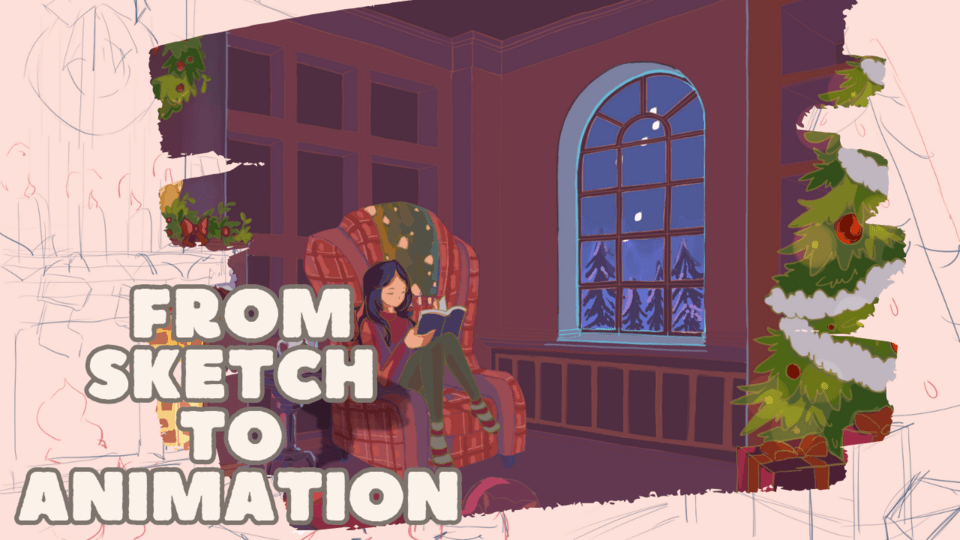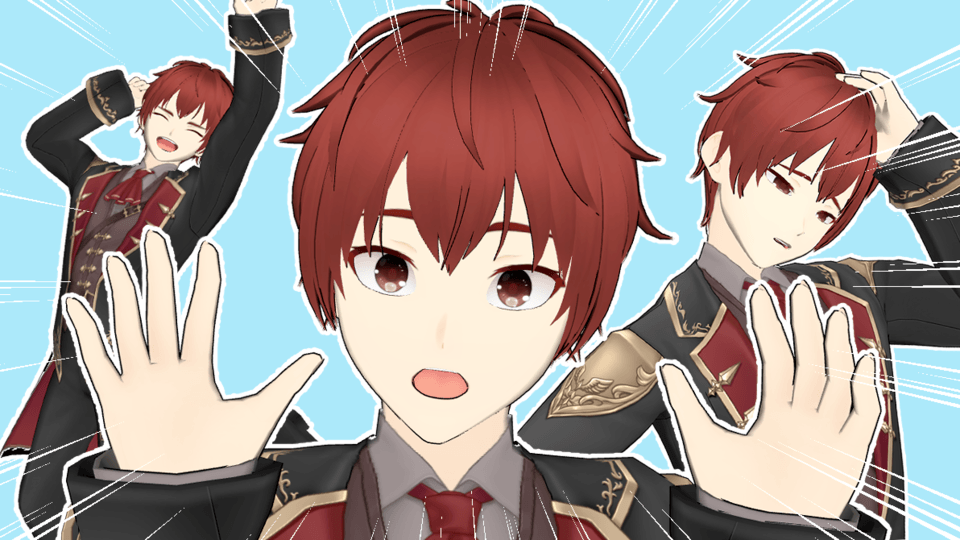Mastering Reflections: A 3-step light technique
introduction
Hello! This is Metosoi! Here we will introduce the basic mechanism of specular reflection and how to draw it.
First, we will explain the basic knowledge for using specular reflection in illustrations. Next, we will introduce the drawing procedure through an illustration making video of a material that actually has mirror-like properties. Let's go through basic knowledge and making, and finally try making applied illustrations! Let's learn together to create more flavorful illustrations by drawing with sparkling, reflective substances!
What is specular reflection? ~The basics of specular reflection~
Well, in order to draw, at least you need to know what kind of phenomenon specular reflection is.
We see things by the reflection of light.
When light reflects off an object, the condition of the surface of the object determines whether it is diffused or reflected as is.
When light is reflected as it is, it is called specular reflection. (Mirror surface is also called specular)
Similarly, when light is diffused and reflected due to the same state of reflection, it is called diffuse reflection.
Roughly speaking, specular reflection is more likely to occur on materials with smooth surfaces. Some simple examples include mirrors, glass, and water surfaces.
In contrast, diffuse reflection occurs in rough materials. I'm familiar with clay, rubber, and the matte finish often seen on doorknobs.
When drawing objects, carefully observe how smooth the object's surface is. It might be a good idea to try it out.
There must be other substances around you that have reflections. Take a closer look and let's try our hand at it!
I found something interesting while sketching! My water bottle has parts that have mirror and diffusion properties! Knowing the properties of reflection will help you when drawing mixed textures like this.
Apparently, the specular reflection part has a relatively bright highlight, but the diffuse reflection part looks a little darker than the highlight because the light is scattered in various places.
When expressing specular reflection in an illustration, if there is strong incident light, it may appear as a highlight.
This is a word that is familiar to people who often draw illustrations.
This highlight, which is generally drawn on the eyes, seems to be a phenomenon accompanying the specular reflection of the eyeballs covered with tears!
Let's compare how much more vivid the eyes become depending on the degree of specular reflection component.
First, prepare an pupil with only diffuse reflection and almost no specular reflection component.
This is cool as it gives off a lifeless, dark atmosphere.
If you want to create that kind of atmosphere, this might be okay!
Next, here is the eye with the main specular reflection components added.
As mentioned above, the eyeballs have a smooth texture caused by tears, which causes specular reflection. Similarly, specular reflections may appear on the skin due to oil and moisture. Observation is important.
Yes! Adding highlights will make your eyes look lively and full of tears!
This alone is enough, but I'll use a little trick...
how is it? Don't you feel like the world has expanded beyond your screen?
Those with an observant eye may have noticed that the black iris reflects the surrounding scenery. This is the basics of specular reflection. Since the light is reflected as is, the surrounding scenery (incident light) is reflected almost unchanged.
Eyes are mirrors that reflect the outside world, and you can explain the situation even if you are not drawing the world around you.
There's no reason not to use it!
Well, since we got excited and talked about a lot of things, let's review what we've learned so far.
There are two types of reflection: specular reflection and diffuse reflection.
Smooth = Specular reflection Rough, fluffy etc. = Diffuse reflection
Specular reflection makes the screen gorgeous
``Why does the screen become so gorgeous? ”(...?
If you are good at asking questions, you may think so, but if there is a request, I would like to provide tips that touch on this, so if you have any trivial questions, please feel free to comment or email me. please!
Basic specular reflection illustration making ~Water surface~
I've talked about a lot of things, but somehow I realized that specular reflection is when light is reflected as it is.
It's okay if that's the case.
Well, based on this, super! Let's draw a basic specular reflection caused by a calm water surface.
Here, we will mainly introduce specular reflection on water surfaces. **
① Separate the background and reflective surface
This time, I want to draw the sunset sky and the river that reflects it, so first I separate the sky and the ground where the river flows.
②Draw the sky
Let's draw the gradation of the sunset.
The trick is to use a brush instead of a gradient tool to avoid a monotonous sky. Even at sunset at the same time, the color of the sky is quite different between the direction in which the sun is setting and the direction in which it is setting.
Here, I want to draw a beautiful gradation of red and blue in the direction of the setting sun, so I created a brighter gradation in the lower left part where the sun would have set.
Roughly place the color with a brush...
Blur left and right (゚Д゚;≡;゚д゚)
③ Add roughly location
Add trees to explain what this place is like. In the middle is a blank space to add a river.
④Draw the river
Now, here's the point. First, we separated the ground and the sky. Delete part of the ground and insert the upside-down sky.
This makes it look like a river with specular reflection.
Let's add more details.
Let's make the sky even more appealing by flying birds.
Now, we finally reach the point of reflection on the water surface.
The image from earlier...
This is it.
...
Do you know what changed? (;'∀')
As you may have noticed, the color and brightness of the sky reflected in the river has been changed. (Moreover, the screen ratio and the darkness of the ground are also changed. If you noticed this, you must have a great eye!)
I wrote that specular reflection means that the light that it receives is reflected as it is, but this is only a theoretical story.
Some objects do not reflect 100% of the light; some percentage of the light may be absorbed by the object itself or reflected with a different color. I didn't lie...
In other words, rather than just reflecting light, the water surface absorbs, or reflects, less light. This also means that there are cases where the reflective surface looks a little dark.
Furthermore, even in the same water, the amount of light reflected on the water surface varies depending on the quality of the water, so not all light is reflected back to our eyes as it is.
It's like the water surface in a glass of fresh water having a different color than the surface of a glass of tea.
Observation…observation…observation…right? I don't think it's a bad idea to take photos and record them.
In fact, this illustration I'm currently drawing is based on a photo I took.
I think it's quite difficult to create a realistic representation with a simulation in your head, so if you see any scenery in your life that you think is even slightly nice, take a photo and save it.
⑤Adjustment
Once I've done this, I want to make it look as good as possible.
this…
like this!
I tried increasing the contrast using the tone curve. It would be nice if it had a higher impact and felt more eye-catching.
As a side note, editing the tone curve into an S-shape will increase the contrast.
It's a technique that can be used for most illustrations other than water surfaces, so it's worth remembering!
Applications so far! ~Decorate with specular reflection~
Up to this point, we have focused on the super basic mechanism of specular reflection and how to draw basic illustrations.
This is an advanced version of specular reflection using water effects.
I will explain this with reference to the video below.
The making-of is mentioned in the video, so let's take a look at the effect of water from the completed work.
①Reflects sunlight
The water surface reflects the sunlight. The surface of this water seems to have ripples, unlike the river before. The ripples create uneven light reflection, reflecting the glittering sunlight back towards you.
② Light gathering phenomenon
Pay attention to the part of the face that has spherical water droplets floating around it.
A light condensing phenomenon (caustic phenomenon) occurs when spherical or convex water collects light. (Or I'm causing it...)
Let's put it on because the light will shine on your face and make it look gorgeous.
③Distortion
You should be able to see the horizon on the other side of the water, but...you can't see it clearly.
This is because light is refracted by the complex shape of water.
To be honest, just because these phenomena are mentioned does not mean that we are conducting an accurate simulation, so we do not care about the details.
If you can handle 3DCG software, I think it would be a good idea to do a simulation and see.
Finally
Thank you for taking your valuable time to read this far!
I hope this conveys even a little bit of the power that controlling light can have on illustrations.
If you liked this post, I would appreciate it if you could give me a like ♥ ️ or favorite ⭐!
I hope this TIPS will be of some use to you! Good Luck!
[Materials used for illustrations]
Introduction
https://assets.clip-studio.com/ja-jp/detail?id=1722747
Knipen custom
https://assets.clip-studio.com/ja-jp/detail?id=1853448
Goretober gradients preset
https://assets.clip-studio.com/ja-jp/detail?id=1800508
Rough texture collection
https://assets.clip-studio.com/ja-jp/detail?id=1747609
Evenant-Concept-Art-Brush-Pack
























Comment